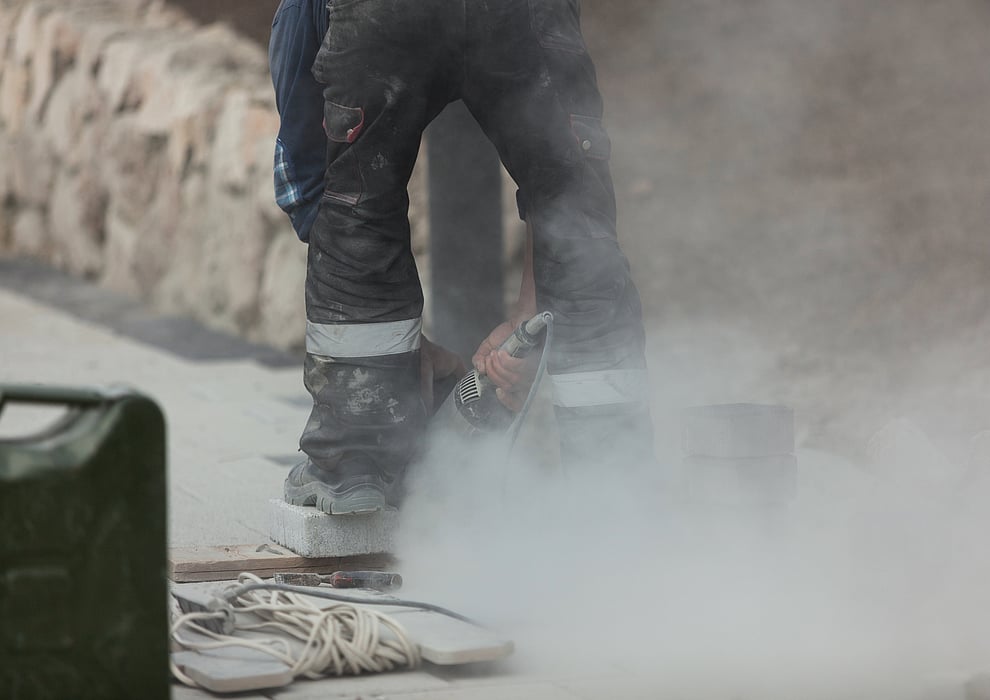Occupational Exposure to Dust: Health Problems & Safety Tips

Occupational exposure to dust is a reality in many industries, but there are ways to protect yourself.
Learn more about dust exposure and the health problems that may develop — such as chronic respiratory diseases, breathing problems and reduced lung function — and get some safety tips for reducing your exposure to dust on work sites.
Occupational exposure to dust: What to know
Occupational exposure to dust occurs when employees are exposed to various types of dusts in their workplace, according to the American Lung Association (ALA). This exposure can lead to serious health problems and involves numerous industries. Some of the dusts that can be found in the workplace include:
- Silica dust
- Asbestos
- Coal dust
- Soil dust
- Wood dust
Is exposure to dust a workplace hazard?
Exposure to dust in the workplace has been shown to be a serious hazard. According to Johns Hopkins Medicine, occupational lung diseases caused by dust are the primary type of occupation-associated illnesses reported in the United States. In addition, studies have shown that dust exposure may be associated with an increased risk for other illnesses.
What health problems may develop from occupational exposure to dust? While lung diseases are the most common health problems caused by dust in the workplace, studies show there are other potential health effects.
Occupational lung disease consists of several different types, according to the ALA:
- Silicosis: This is caused by breathing tiny bits of a mineral called silica found in sand, quartz and other rocks. Construction and mine workers are most at risk for silica dust exposure. Drywall dust exposure is one specific example.
- Coccidioidomycosis (Valley fever): This is caused by breathing in the fungus Coccidioides, which is found in the soil. Construction workers and farmers are at highest risk for this disease.
- Hypersensitivity pneumonitis: This occurs when a worker breathes in something which causes an allergic reaction.
- Histoplasmosis: Breathing in fungal spores from soil that has been contaminated by bird or bat droppings is the cause for this one. Farmers, construction workers, bird farmers and landscapers are at risk for this.
- Asbestosis: This is caused by asbestos, a common material used in building before the late 1970s. Those most at risk are those who worked in manufacturing, milling, mining, or installation or removal of asbestos before its use was stopped.
- Mesothelioma: This is cancer of the lung lining caused primarily by asbestos exposure. In addition to the above workers, those who remodel older homes and pipe fitters are also at risk.
- Coal workers' pneumoconiosis: Also called black lung, this occurs when long-term exposure to coal dust causes scarring of the lung.
- Asthma (work-related): This accounts for up to 21% of the new cases of adult asthma in the United States. At risk are women in service industries and people in metal work or forestry.
- Chronic obstructive pulmonary disease (COPD): A leading cause of death in the United States, its most common risk factor is smoking. However, exposure to dust can also increase the risk for this lung disease.
Other diseases
- Rheumatoid arthritis (RA): A recent study in the Annals of the Rheumatic Diseases showed a connection between occupational exposure to dust and an increased risk of RA. In an accompanying editorial, rheumatologist Dr. Jeffrey Sparks, from Brigham and Women's Hospital in Boston, noted the finding “demonstrated that several common, occupational inhalable agents are associated with increased risk” of RA.
- Bladder cancer: In a study published recently in the journal BMC Cancer, researchers found there was an increased risk of bladder cancer among men with exposure to silica and asbestos.
Safety tips for reducing exposure to dust on work sites
As employers and employees, it is important to work towards the safest environment possible for all workers. Here are some safety tips for reducing your exposure to dust while at work.
- Wear personal protection equipment (PPE) provided by your employer. If you are self-employed, become educated about the types of dust you come into contact with and the type of mask and/or suit that should be worn
- Work in well-ventilated areas
- Attend all safety training offered by your employer
- Report any respiratory symptoms you experience while at work to your supervisor
- Don’t smoke
- If self-employed or a business owner, invest in proper safety, filtering and ventilation equipment
Resources:
American Lung Association: Occupational Lung Diseases
U.S. Occupational Safety and Health Administration (OSHA): Wood Dust
John Hopkins Medicine: Occupational Lung Diseases
Annals of the Rheumatic Diseases: Rheumatoid Arthritis
Annals of the Rheumatic Diseases: Occupational inhalants, genetics and the respiratory mucosal paradigm for ACPA-positive rheumatoid arthritis
Related Posts
La Casa Blanca actúa para que las pastillas antivirales contra la COVID estén más disponibles
MARTES, 26 de abril de 2022 (HealthDay News) -- La administración de Biden...
Just a Few Days of Walking Per Week Yields Health Benefits
THURSDAY, March 30, 2023 (HealthDay News) -- The number of days per week taking...
Higher Sodium Intake Linked to Coronary, Carotid Atherosclerosis
FRIDAY, April 7, 2023 (HealthDay News) -- In minimal adjusted models, higher...
